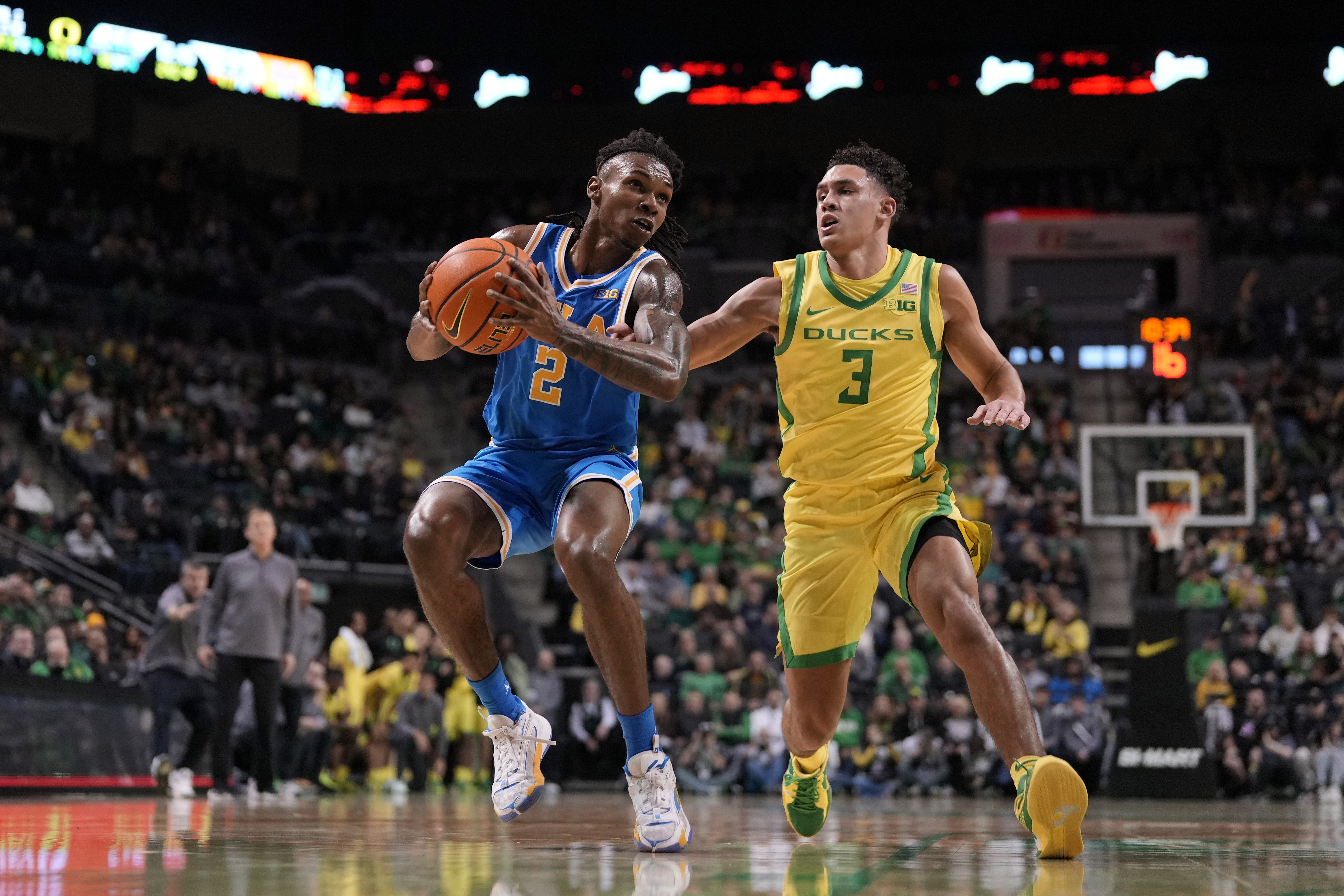
This begs the following question…are these two teams the best in the conference?
Both teams have a combined 19-2 record thus far. Oregon’s only loss ironically came to UCLA at home. The Bruins lost a neutral site game versus a veteran New Mexico team earlier this year. Breaking a new roster, Mick Cronin’s team likely would win a rematch had those two teams played at this point in the year.
Oregon’s non-conference play has been spectacular. The Ducks have reeled off wins against the likes of Texas A&M, Alabama, and San Diego State. UCLA’s win in Eugene versus Oregon was significant for the program. It took the momentum from that victory and beat Arizona in Phoenix in front of a very pro-Wildcats crowd.
Dana Altman is one of the more underappreciated coaches in all of the sport. He tailors his style of play directly to the personnel he has at his disposal. As is the case in virtually every year he’s been with Oregon, his current roster is loaded with depth.
Jackson Shelstad has gotten off to a bit of a slow start by his standards. Though make no mistake about it — he’s among the most talented guards in the conference. Villanova/Washington State transfer TJ Bamba is a great complement to him on the wing. Up front, 7-footer Nate Bittle is a walking double-double. Georgetown transfer Supreme Cook and former 5-star forward Kwame Evans Jr. give the team some real pop up front.
Trusted sixth man Keeshawn Barthelemy and starting forward Brandon Angel both average in double-figures. Both players also shoot north of 40 percent from three-point range. When throwing in gritty guards Jadrian Tracey and Ra’Heim Moss, along with former elite prospects Mookie Cook and Jamari Phillips, this is a very dangerous squad that can play with tempo offensively and suffocate you with length and athleticism defensively.
UCLA is also a deep team. Cronin routinely plays 10 guys — and can even go to 11 if need be. Cronin’s calling card as a head coach involves developing defensive juggernauts. This team is no different. Kenpom has UCLA ranked as the No. 4 most efficient team defensively in the country. Haslametrics has UCLA No. 2 nationally in defensive efficiency. The Bruins allow only 84.94 points per 100 possessions. Most impressive, UCLA is No. 1 nationally allowing opponents to average only 55.0 PPG.
Skyy Clark and Dylan Andrews are both superb on-ball defenders. Wing Kobe Johnson is constantly looking to rack up steals and deflections. Forward Eric Dailey Jr. can switch on any screen, and the team gets a real shot-blocking presence from 7’3″ Aday Mara and 6’9″ pogo stick William Kyle when coming in off the bench.
Offensively, Tyler Bilodeau is the straw that stirs the proverbial drink. He can score on all three levels — from three, in the midrange, and the paint. Dailey Jr. is probably the team’s best pro prospect at this point, and he’s been highly efficient.
Aside from Kyle and Mara, Cronin has a fleet of guards to use in reserve — starting with 6’7″ sharpshooter Lazar Stefanovic, former McDonald’s All-American Trent Perry, and the aggressive Sebastian Mack. Mack is a bulldog in the best sense of the term, always looking to attack the rim off the bounce. He’s very reminiscent of your typical Big East guard — where he seeks contact before finishing in the paint.
The travel for UCLA, Oregon, USC, and Washington will not be easy. Having to compete versus raucous Big Ten crowds also isn’t the most comfortable thing to deal with. UCLA gets two more opportunities at big non-conference wins (North Carolina, Gonzaga) before entering the meat of the conference schedule. Oregon plays Stanford and Weber State before a date with Illinois on Jan. 2.
We’ll learn more about all of these teams through the first few weeks of the conference schedule. Though without question, Oregon and UCLA appear to be real threats to win the Big Ten in their inaugural seasons in the league.